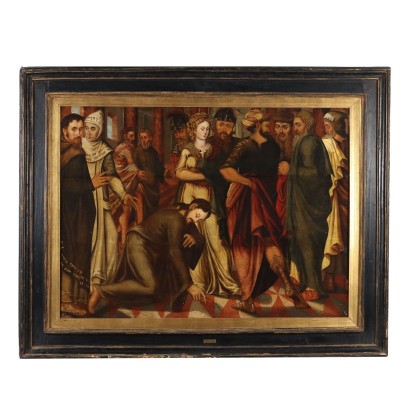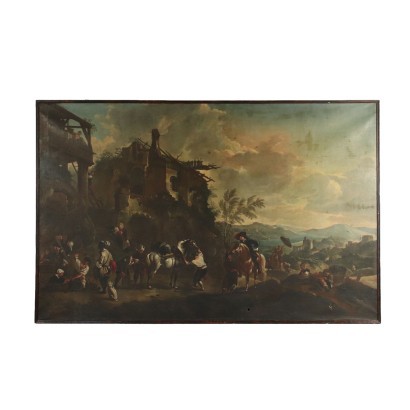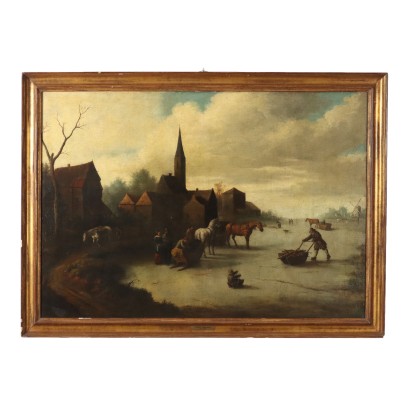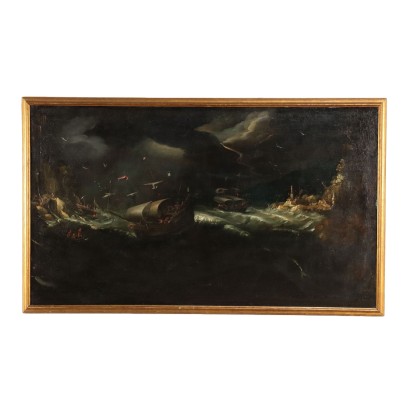ARARPI0235790
Antique Painting Jesus Christ and the Adulteress Flemish XVI Century
Flemish School, XVI Century
Oil on wooden board. Flemish school of the 16th century. The work has a plaque at the base attributing it to Lambert Van Noort (1520 -1571), justified by the closeness to his pictorial methods which can be found in the faces of Jesus and Magdalene, but not confirmable for the other parts of the painting. The work recounts the episode from the Gospel of John in which the scribes and Pharisees brought a woman accused of adultery to Jesus, to test her observance of the law of Moses, which included stoning. But Jesus, bending down to the ground, began to write with his finger in the dust, then when urged, he pronounced the words "Let anyone among you who is without sin cast the first stone", saving the woman and subsequently forgiving her. The large stage is filled with a large and tight group of characters. Jesus in the centre, is the only figure bent on the ground, estranged from the rest of the group and fixed in his gesture of writing with one finger; standing behind him, with a precise vertical alignment of her face with that of Christ, is the accused woman, who covers her body with her cloak observing Jesus' gesture, while awaiting the sentence; all around the scribes, the Pharisees, some soldiers, who instead speak animatedly among themselves, are agitated, confronting each other, indicating what Jesus is doing. The subject was widely represented in Flemish painting, with different interpretative methods. If in this painting the Flemish school is clearly perceived in the faces with hard features and in the rather rigid bodies in the movements of the scribes and Pharisees, as well as in the representation of the building in the background and in the meticulous representation of the shoes in the right foreground, the two The figures of Jesus and the woman are instead affected by the Italian influence, which softened the features of the faces, gave the movements of the body greater composure and gracefulness, and with the help of a brighter color made them stand out among the other figures. The panel of the painting was subjected to restoration and relined in the first half of the 20th century. The painting is presented in an adapted antique frame.















